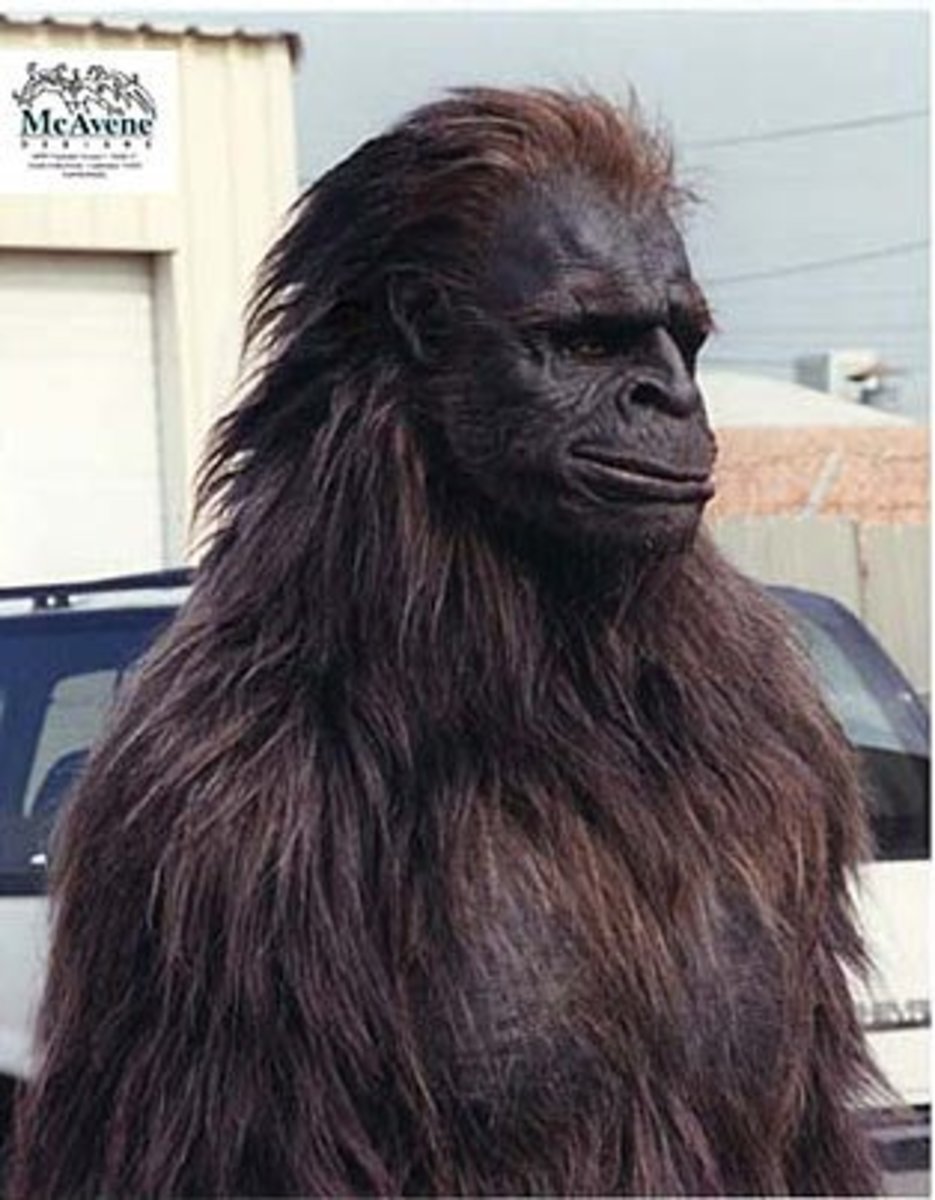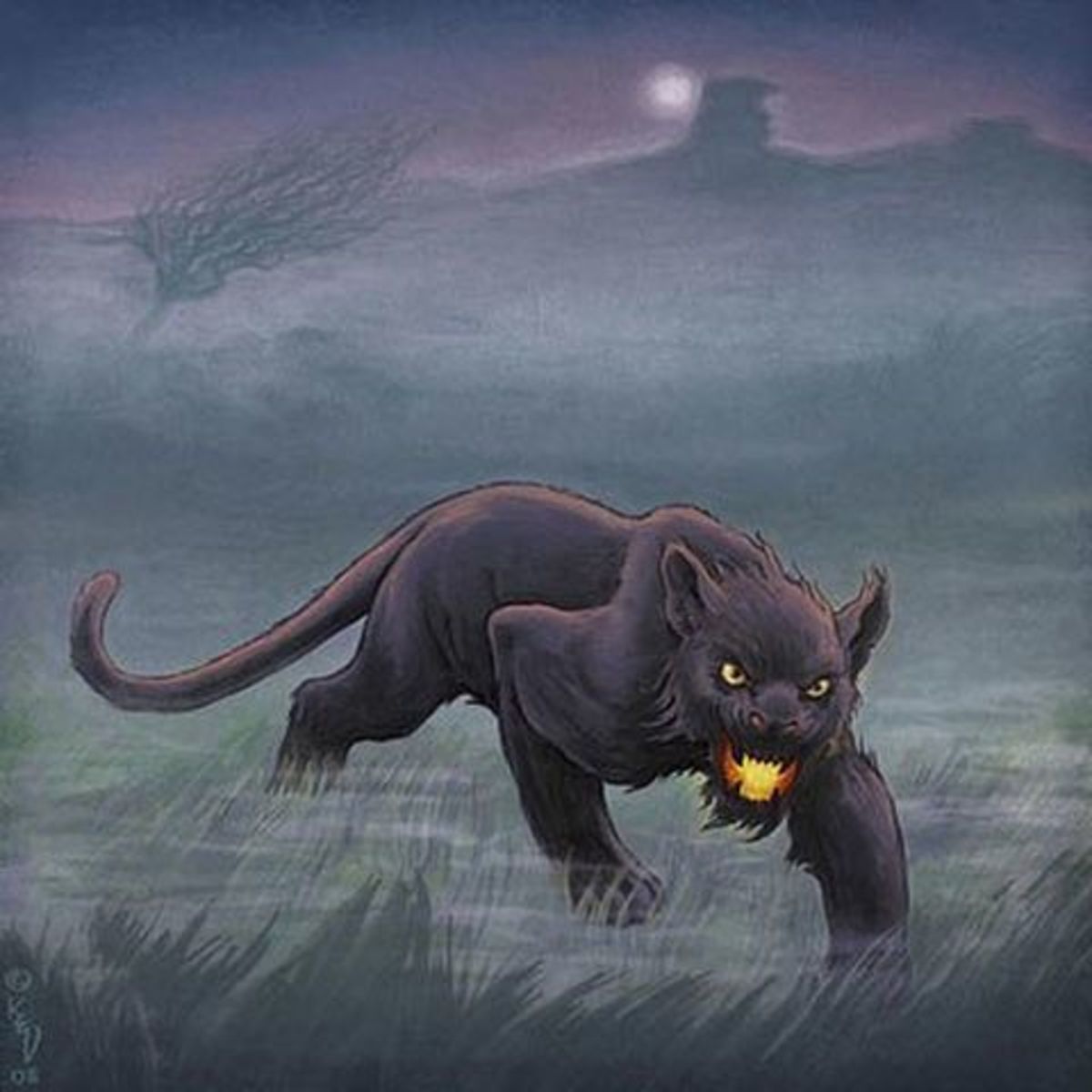Bigfoot: Theories and Such
It seems that over the last few years, the topic of Bigfoot or Sasquatch has been increasingly discussed. There are several television shows dedicated to the topic along with books, podcasts, radio shows, blogs, and websites. Mainstream news agencies will even report on Bigfoot sightings, sometimes with added humor and jokes. Bigfoot clubs have been organized, some with professional Cryptozoologists, and some for amateur Bigfooters, or just those with an interest in the field. Cryptozoology is defined as a pseudoscience that aims to prove the existence of entities from such folklore as Sasquatch, Chupacabra, Mothman, and other “cryptids.” Cryptozoology does not follow a specific scientific method and is not considered to be a true science by the academic community.
The existence of Bigfoot is often hotly debated by those who staunchly believe that they do or did exist, those that adamantly believe they do not exist or never existed because of the lack of physical evidence, and those that do not declare one way or another. Some use the topic for joke material while waiting for definitive proof. Bigfoot believers include people from all different educational, income, socio-economic, age, and gender classes. Bigfoot skeptics include people from every background. So how did we become so divided that some individuals swear of the existence of Bigfoot and others think the idea is completely absurd? Let’s examine some further information.
Legends of this cryptid go back for generations and each culture developed their own terms for what we now commonly refer to as Bigfoot. Each language has developed its own name for the creature. However, there is generally a common theme such as wild-man or hairy-man for these human-like giants. In the mid-1800s, Native Americans referred to a race of wild-men living in the Pacific Northwest as Skookums. There have been cave drawings of large ape-like figures to accompany the folk tales passed down in the United States. Is it all one big, elaborate hoax? If so, then how do cultures from entirely different continents have their own story versions along with drawings of a similar bi-pedal creature?
These tales predate mass communication between remote parts of the Earth. Given the geographic obstacles, the different languages of the native people of each tribe, the different time-spans of sightings, and lack of communication avenues, is it even possible to spread a hoax of this magnitude? It appears that as more research is conducted, we still have more questions than answers.
Nepal is a landlocked country in Southern Asia that contains Mount Everest, which is the world’s tallest peak. Nepal, along with neighboring Tibet, has its own version of Sasquatch. The native people refer to them as Yeti or Meh-Teh. A less formal term, coined by Lieutenant-Colonel Charles Howard-Bury in 1921, is the Abominable Snowman. The Himalaya Mountain Range is located in Northern Nepal and covers 1400 miles with an average elevation of more than 20,000 feet. Due to the altitude of this mountain range, its highest peaks are covered by snow year-round, thus leading to the Yeti being portrayed as white in color.
North American terms for Sasquatch vary greatly. Even within the United States, names include Skunk-ape, Grassman, Ape-man, Stink-man, Hill Monkeys, and numerous others. The Pacific Northwest and the Appalachian Mountains in the eastern part of the country are listed as Bigfoot hotspots, but sightings have been reported in virtually every state including the low lands of the Midwest.
The most well-known proof of Bigfoot’s existence is a short piece of footage called the Patterson-Gimlin film. It was recorded in northern California in 1967 alongside Bluff Creek about 18 miles inland from the Pacific Ocean. The film was recorded by Roger Patterson and Robert “Bob” Gimlin. Roger Patterson passed away in 1972. He reportedly maintained, right to the end of his life, that the bipedal creature captured on film was real. Bob Gimlin, who is still alive at the time of this writing, has always denied being involved in any attempt to pull off a hoax with the recording. According to the two filmmakers, the date of the footage was October 20, 1967. This filmed proof of Bigfoot has been the most studied and scrutinized piece of evidence in the argument of Bigfoot’s existence. The Bigfoot sighting is part of a larger recording, but is covered during an approximate 53-second segment of the film. If you are new to the Bigfoot discussion, review of the footage is the best place to start. The creature on the film has been determined to be female and has become known as “Patty.”
Modern technology has been used to try to authenticate the footage by slowing the film on a frame-by-frame basis. Science has been applied by trying to dissect the stride of the animal along with its arm lengths and movements, all in an effort to prove or disprove that it was a human in an ape-like costume.
Skeptics contend that the film was a hoax due to the fact that no other hard evidence has been submitted to legitimize that the creature does or ever did exist. There are no skeletal remains, hair samples, or clear pictures of the creature in existence. Notice that I say clear pictures as there are numerous, rather blurry shots of Bigfoot.
Theories include everything from a very small number of these creatures being dropped off by Unidentified Flying Objects (UFOs) to portals in space and time that allow them to travel between universes. Believers come forth with credible stories of how they were skeptics until they had their own personal encounter that resulted in changing their lives forever. Nonbelievers maintain that even with modern technologies such as cell phone cameras, game cameras, and satellite imaging—that there is still no iron-clad proof that Bigfoot exist.
Are humans much more intelligent than Bigfoot? Is it a primate with limited cognitive abilities or perhaps is it more intelligent than humans? As an avid outdoorsman and deer hunter, I know how well a large whitetail buck can disappear from the face of the earth on opening day of hunting season. Animals adapt and learn to survive and evolve as time changes. Can we humans not use our superior intelligence and sophisticated technology to finally find definitive proof of the existence of Sasquatch? I leave you with a final thought to ponder—has our technology been able to locate Malaysian Flight 370, a commercial airliner that went missing in 2014, tragically with 227 passengers and 12 crew members on board? Years after the fact, with several in-depth investigations, we have been left with more questions than answers.








